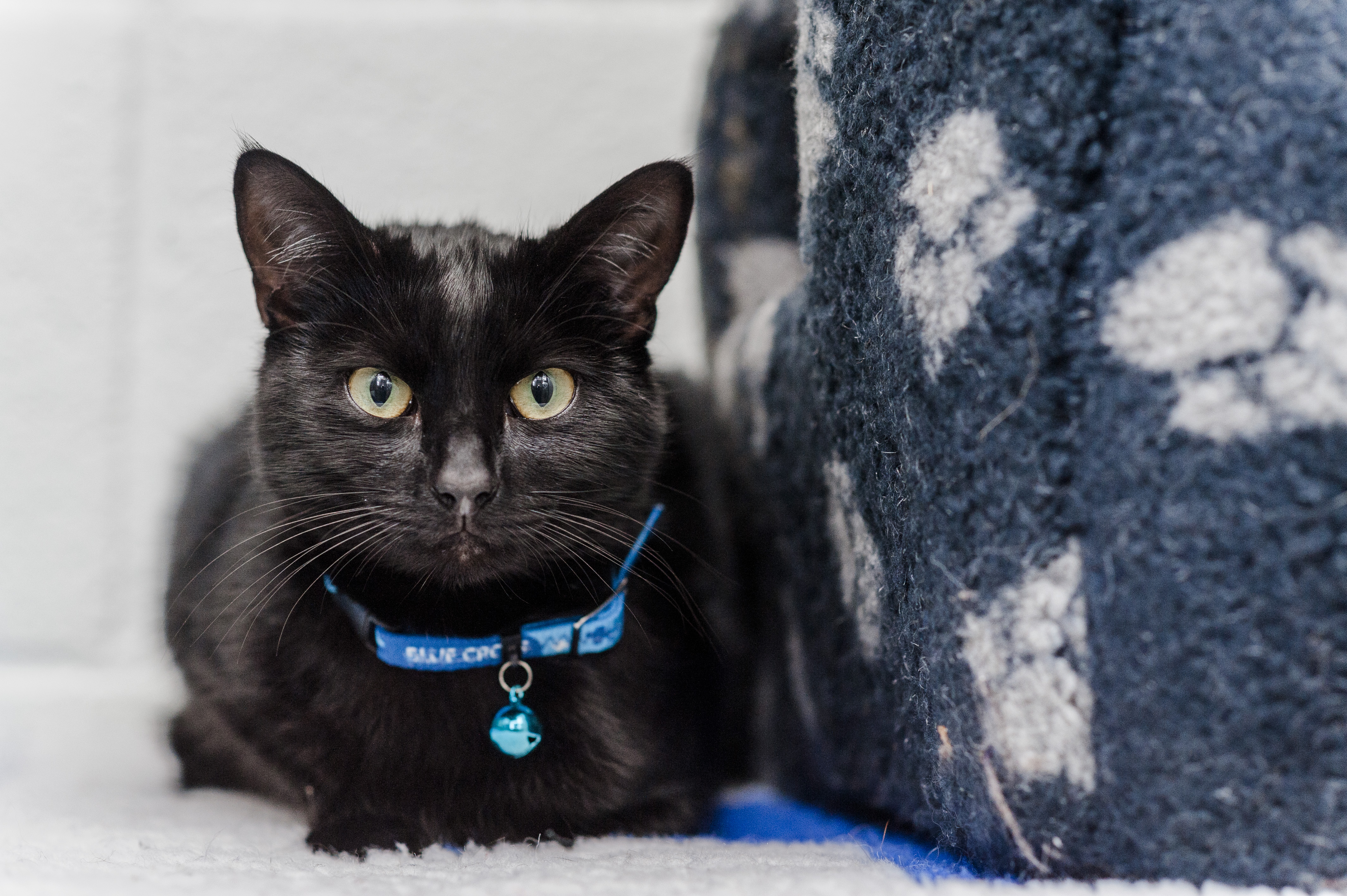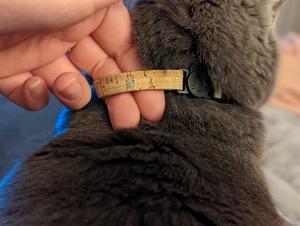
Cat collars
Cats don't need to wear collars or visible identification by law (as dogs do). But, you may feel more confident letting your cat venture outside if they are wearing a collar with ID as a clear sign that they are owned and have a home. It may also help if they wander off too far, get lost or get into trouble because someone will easily be able to reunite you both after reading your details.
Important
Even if your cat wears an ID collar, microchipping them is still the best way to make sure you and your cat can be reunited. It will be mandatory to microchip cats in England from 10 June 2024.
How can I keep my cat safe if they need to wear a collar?
If you think a collar is right for your cat, there are some simple steps you can take to keep them as safe as possible and reduce the risk of injuries.
1. Make sure the collar is a quick release
Also known as a breakaway or safety design collar, this design means that if your cat's collar becomes stuck on something, they can pull away and leave the collar behind – instead of getting trapped themselves.
Avoid using non-breakaway or elastic collars on your cat. If you're not sure if a collar is quick release, check it breaks apart easily before putting it on your cat by pulling on the sides with your hands.
2. Regularly check the collar
Check the collar every few days to make sure it hasn't become loose or tight, and that it doesn't have any damage or loose threads that could hurt your cat. It's also a good idea to check the skin under your cat's collar as part of their routine health checks.
3. Keep collar attachments light
If you have any 'extras' on the collar (such as an ID tag, tracker or bell), make sure they are as small and light as possible. Be sure to check they don't stop the quick release on the collar and that they don't get in the way of your cat's natural movements.
4. Always check the collar fit
A collar that's too tight could be uncomfortable for your pet, or lead to skin problems. A collar that's too loose could mean they get their leg or jaw trapped through it.
When you put a new collar on your cat, size the collar to fit comfortably around your cat's neck. You should be able to fit two fingers between the collar and your cat's skin.
Types of cat collars
There are different types of collars available and they often have different uses.
Reflective collars
Pros: Designed to keep cats safe by reflecting back headlights or other lights, this collar means that people are more likely to see your cat at night.
Cons: They only work if the light hits the collar exactly and the reflection won't always be noticed by people, especially by drivers.
Tip
If you're worried about your cat when they go out after dark or you live near a busy road, it might be best to keep them indoors overnight.
Cat flap collars
Pros: These usually have a magnetic tag 'key' that only allows the cat wearing the collar to come through the cat flap.
Cons: The tag or collar can become trapped while your cat is out which can lead to an injury or, if your cat is able to pull away and loses their collar, leave your cat stranded outside.
We recommend using a microchip cat flap instead.
Flea collars
In general, flea collars are an unreliable method of flea control.
Pros: Claims to keep your cat free of fleas.
Cons: There are few that are fully effective and some can even have unwanted effects, like fur loss.
It's better to prevent or treat fleas other ways. For example, 'spot on' treatments and tablets, especially if you buy a prescription product from your vet.
Speak to your vet if you're not sure which flea or worming treatments are right for your cat.
ID collars
Pros: These can be embroidered or have a tag attached that contains your details. They can help let people know your cat has a home, and means they can get in touch with you if your cat goes missing.
Cons: They can come in a few different collar styles – make sure you get the quick release version!
Important
Make sure you keep your cat’s microchip details up to date when you move house, as out of date details is a common reason why cats don't get reunited with their family when lost.
Alert collars
Pros: Useful to make sure your cat gets any care they need from other people in the neighbourhood. The writing or embroidery on them can give information about a medical condition or specific diet your cat needs.
Cons: May not always be available in a quick release collar. So it may be better to get a quick release ID collar to keep your cat safe.
To avoid needing a collar, you could consider putting leaflets or letters through local houses with a photo of your cat and information about their needs.
Tracking collars
Pros: Very popular, and contain a GPS tracker that you can use to find your cat if they stray too far or become lost.
Cons: Using a quick release version (which we would highly recommend) may mean your cat loses their tracker when they're out. Though you should be able to find the tracker again by using the GPS signal to track it down.
We would recommend to always pick the smallest tracker possible.
Bell and Anti-hunting collars
Pros: These try to stop your cat from hunting or killing birds and other wildlife. They aim to warn wild animals that your cat is in the area so the wildlife can escape before your cat catches them.
Although none of them are 100 per cent effective, they can often reduce the amount of birds, mice and other small creatures that your cat will catch and bring home. If you want to use a bell or anti-hunting collar, make sure it has a quick release to keep your cat safe.
Cons: Some cats won't be put off by a bell or anti-hunting collar (or will learn to hunt while wearing them).
Tip
Playing with your cat and giving them a good quality, complete diet may reduce their urge to hunt when they're out and about.
Decorative collars
Decorative collars are just there to act as a 'decoration' for your cat. Your cat won't appreciate the pretty pattern or colours, and the collar could do them harm. We would recommend completely avoiding collars that are there just to look nice. After all, cats are beautiful just as they are!
Problems caused by cat collars
Although many people use a cat collar to keep their cat safe, unfortunately some collars can have the exact opposite effect and can hurt or injure your cat.
Skin issues
Many collars will rub away the fur on your cats neck and some can cause itchy or red skin. Always monitor your cat closely for any symptoms of skin problems, especially if you start to use a new collar.
Injuries
Collars can cause damage if they get trapped around other body parts.
If your cat manages to get their front leg through the collar then it can cut into the skin behind their shoulder or on the leg, leaving a nasty wound. This can get very infected and take a long time (and even major surgeries) to heal. The collar can also become stuck around your cat's face or jaw when they're grooming.
Your cat's collar can get stuck on other things too, such as a branch or fence post. If the collar does not easily release them, your cat can become distressed, injure themselves in their attempts to pull away, or even put them at risk of choking.
Fortunately, you can prevent cat collar injuries by avoiding putting a collar on your cat, or reduce the risk by using a well-fitted, quick release collar.


